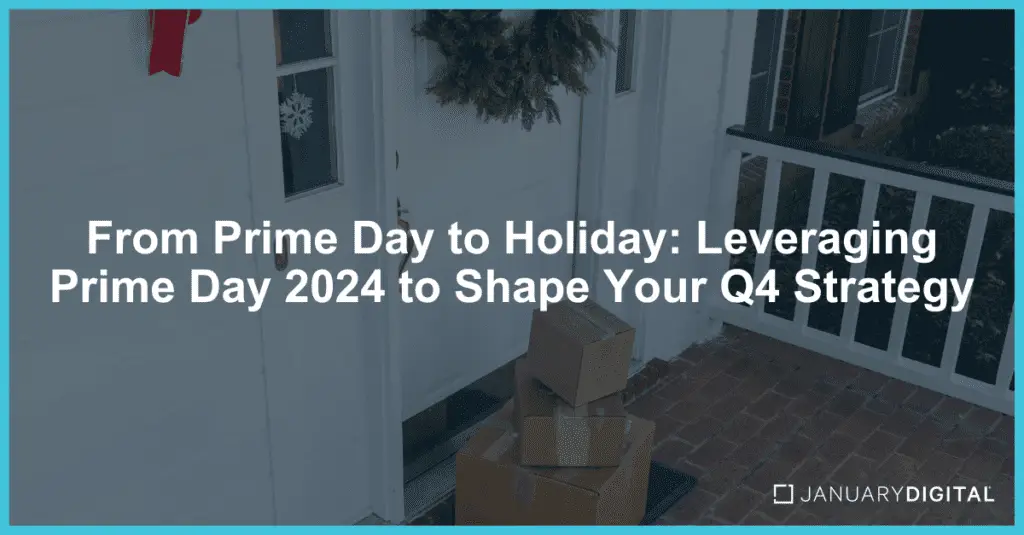
Prime Day has evolved from a mid-year sales event to a major market-wide phenomenon, rivaling Black Friday and Cyber Monday. Occurring in July, Prime Day offered retailers a unique opportunity to experiment with promotional strategies and fine-tune their omnichannel operations ahead of Cyberweek and the Holiday season. With Prime Day 2024 now behind us, here’s what retailers and brands need to know about its performance – both on and off Amazon – and how they can leverage these insights to maximize their Q4 strategies.
Early Birds Catch the Consumers
Prime Day 2024 showed a clear trend: consumers are starting their seasonal shopping earlier than ever. This year, many shoppers used Prime Day to snag back-to-school deals well before the school year began. Items like traditional school supplies, electronics, and apparel saw a significant surge in the weeks surrounding Prime Day.
Start EARLY with your planning and campaign execution for Q4 seasonal events. For the holiday season, this means kicking off promotions as early as October to capture forward-thinking consumers who want to lock in their purchases ahead of time.
Put Your Data to Work
Prime Day provided a wealth of data about consumer preferences and purchasing behavior. Analyzing this data can offer valuable insights for the holiday season. For example, if a particular product category saw high demand during Prime Day, consider highlighting it in your holiday promotions.
Use your data to inform merchandising and prepare in-store and online storefronts for the holiday season. By leveraging insights from Prime Day, retailers can tailor their offerings to meet consumer demands and optimize both in-store and online experiences. This omnichannel approach is crucial given the diverse shopping behaviors of modern consumers, as seen across those who shopped competing deals outside of Amazon during Prime Day and the back-to-school season.
Is Prime Day the New Black Friday?
Prime Day has evolved from an Amazon-exclusive event to a market-wide phenomenon. The past few years, we’ve seen competing retailers like Target and Walmart launch their own sales events to coincide with Prime Day, creating a broader period of heightened consumer spending.
Prime Day IS now a market-wide promotional period similar to Black Friday and Cyber Monday. Treat it as such! If you haven’t yet considered Prime Day as a significant promotional opportunity, plan to do so for the next event. Offering competitive promotions and a seamless shopping experience can help capture the increased consumer spending that spills over from Amazon.
Convenience is Key
Amazon’s competitive edge lies not just in its pricing but also in its convenience. Fast, free shipping and hassle-free returns are major draws for consumers. During Prime Day, brands that matched these conveniences saw a significant boost in results.
For the upcoming holiday season, prioritize enhancing shipping and return policies to match consumer expectations. Offering perks like free or expedited shipping and easy returns can make your brand more attractive to shoppers who prioritize convenience.
Prime Day 2024 has set the stage for the rest of the year. By understanding and applying these key learnings, retailers and brands can better prepare for promotional events and the holiday shopping period throughout the end of the year. Start early, leverage your data, optimize for convenience, and offer competitive promotions to capture consumer attention and drive sales during these crucial periods. Happy planning!


